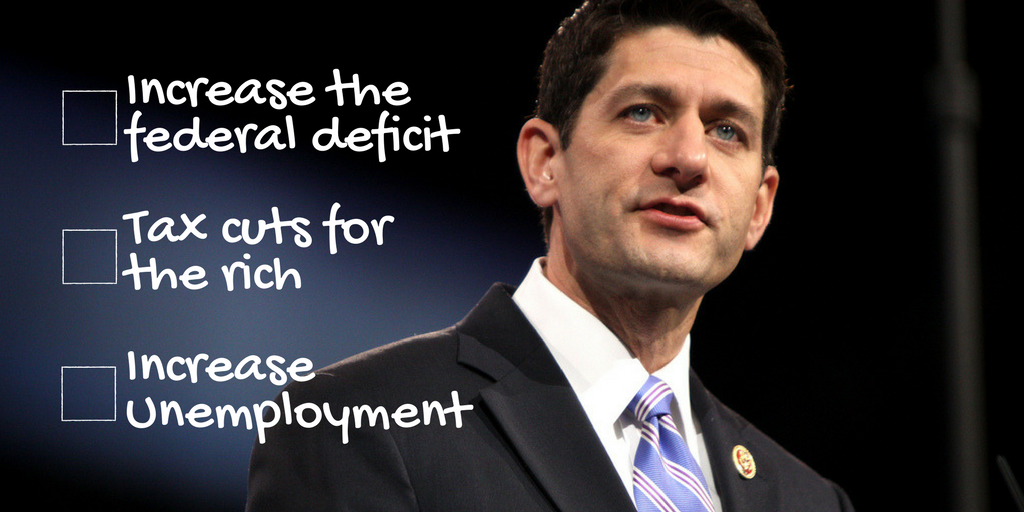
Many people, including many conservatives, have argued that repealing the Affordable Care Act without a replacement plan is a problem. But it is not only the content of "replace" that remains mysterious, it’s also the details of "repeal." Maybe Republicans are reluctant to specify what repeal would entail because the implications of the repeal bill they passed in 2015 are so disastrous. The more people understand the effects of repeal, the less they will like it. (That's also the reason for the extreme haste. The longer the issue hangs out there, the clearer are the negative consequences of a hasty move to repeal.)
So let's cut through the fog and look at what the real repeal agenda and its effects would be.- Cut taxes for rich people. This staple of Republican policy making is never out of style. Tax cuts were a central part of the reconciliation bill that was passed by Republicans in 2015 and vetoed by President Obama. If this element of repeal is retained, it will essentially make it impossible to come up with a viable replacement plan because there will be no revenue to pay for subsidies.
- Take health insurance away from 30 million people. With no viable replacement plan, the non-group insurance market is likely to implode. That, along with the elimination of the Medicaid expansion adopted by 31 states (32 states if North Carolina's proposed expansion goes through), will cause a precipitous decline in coverage and more than undo the progress made by the ACA.
- Increase hospital uncompensated care by one trillion dollars. Once the money and coverage are gone, other dominoes start to fall. The expansion of coverage to millions of low- and moderate-income people has reduced the burden of uncompensated care on hospitals, helping their bottom line and better enabling them to invest in quality improvements like reducing readmissions and hospital-acquired infections. It has also stabilized the finances of many rural and safety-net hospitals.
- Reduce employment. But wait, there's more. Researchers at George Washington University estimate that ACA repeal (with no replacement) would cause the loss of approximately 2.6 million jobs, almost all in the private sector. Many would be health care jobs, but many other sectors would be impacted, as well.
- Increase state costs while lowering state revenues. Expanding Medicaid has allowed many states to draw down federal matching funds for services that were previously paid for with 100 percent state dollars. Repeal of the ACA's Medicaid expansion would eliminate those matching funds and shift those costs back onto states. As state costs increase, revenues would decline as a result of fewer people working and paying taxes.
- Increase the federal budget deficit. It's not just state budgets that would suffer. A recent analysis by the Committee for a Responsible Federal Budget found that ACA repeal would increase the budget deficit by $350 billion over ten years, even before any money was spent on a replacement plan.
- Deny women access to reproductive health services. And, as if all of this was not enough, Speaker Ryan recently added insult to injury by confirming that the reconciliation bill would not stop at dismantling the ACA but would also include a block on federal funding for Planned Parenthood. None of that federal funding goes for abortions – it goes toward other important services such as cancer screenings that would likely be curtailed. Some clinics could also be forced to close.
Blame It On Someone Else
Last but not least, perhaps the most important part of the agenda is not what repeal does, but what repeal proponents can get the American people to believe. Congressional Republicans will try to convince people that all of the harmful consequences of the reckless repeal-with-no-replace strategy would have happened anyway. That is why they are spending a lot of time talking about what is wrong with the ACA instead of what provisions of the law they are actually going to repeal. And who can blame them – tax cuts for the rich and benefit cuts for working families, job losses, hospital closures, and state budget crises are not a very attractive policy menu. And it's also not at all what voters, including Republican voters, want.
So, What Do Voters Really Want?
We know that strong majorities, including a majority of Republicans, support both tax credits to make coverage affordable and the Medicaid expansion. Most people probably don't know that these provisions have been targeted for repeal, but if they did, they would likely not be supportive. We also know that only about 20 percent of the population actually favors the current "repeal now replace later (maybe)" approach that Republicans are currently pursuing. Finally, both polling and focus groups have recently found that Trump voters’ health care priorities are to reduce out-of-pocket costs and keep drug prices down.
Part II: Reality Checking the Reality Check
Read tomorrow’s part two of The Takeaway on the problems with congressional Republicans’ “reality check” on the ACA.
